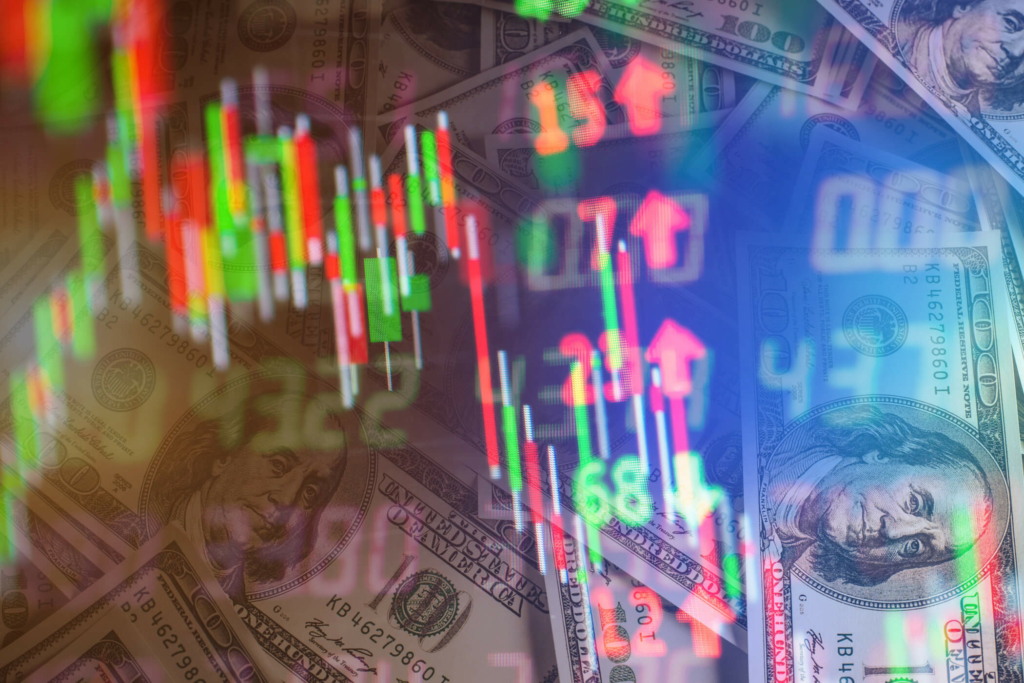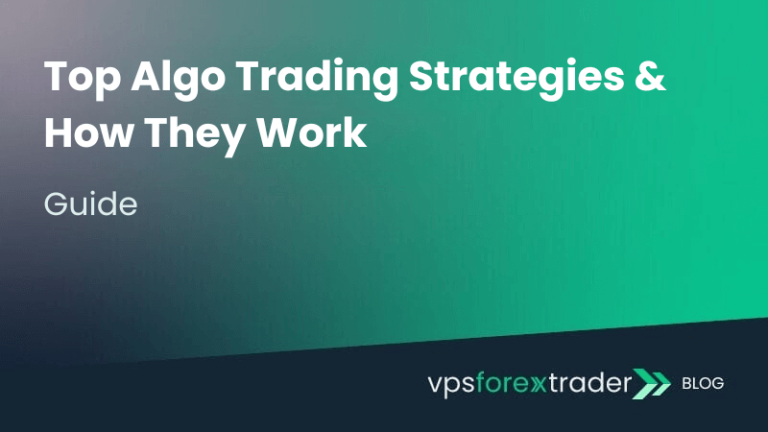In forex trading, brokers have to make money for the services they provide one way or another. One of the ways they do this without charging a direct commission on the transaction is to sell a currency for more than what they paid for it and buy a currency for less than what they will receive for its sale. This is what the concept of spread in forex is all about.
As a trader, the spread is one of the critical aspects of forex trading that you must understand because it affects how much profit you’ll make from a trade. This post explains the concept of spread in Forex trading and all you need to know about it.

What is spread in forex?
In forex trading, the term spread refers to the difference in the buying and selling price of an asset or currency that is being traded. It is also commonly referred to as the bid-ask spread because it represents the difference between the price a forex broker is willing to pay to buy a base currency (the bid price) and the price at which the broker is willing to sell the currency (ask price) in exchange for another currency.
How to calculate spread in forex
The general calculation for determining spread is to find the difference between the ask and the bid price. Imagine you’re a trader looking to buy euros with USD. The bid and ask price on the broker’s site is $1.1205/1.1207. This means if you initiate a buy, the investor will charge you 1.1207 and if you immediately sell Euros you purchased back for USD within a few minutes, the broker will pay you 1.1205 (assuming the exchange rate didn’t fluctuate and the trade was completed).
The spread for this transaction will be calculated as $1.1207 – $1.1205 = 0.0002. This is equivalent to 2 pips.
Fixed vs. Variable Spreads
The spread offered by brokers can either be fixed or variable. Fixed spreads remain constrained at all times regardless of the market conditions. On the other hand, variable spreads change periodically to reflect the real-time demand and supply of currencies.
Generally, brokers operating on a dealing desk model are more likely to offer fixed spreads. That’s because they’re able to use their internal liquidity to control prices and maintain a fixed spread. However, non-dealing desk brokers have no internal liquidity, which means they have to obtain prices from multiple liquidity providers, causing significant differences in the spread.
Choosing between fixed or variable spread mainly depends on your trading style risk tolerance and experience. Fixed spreads are typically higher to allow the broker to compensate for their role as a counterparty to your trade.
On the other hand, variable spreads are lower and are more transparent. But they’re also more likely to be affected by market volatility. This makes it difficult for traders to predict trading costs. There’s also a risk of slippage due to rapid price movement.

Factors That Influence Spreads
Factors that affect liquidity and volatility in the forex market can have a significant impact on how wide or narrow the spread for a currency pair will be. Some of these factors are explained below:
Popularity of the currency pair
The vast majority of participants in the trading markets focus on popular currency pairs. As a result, these currencies have high liquidity, leading to lower spread because the difference between their buy and sell prices is relatively small. For instance, the spread of the EUR/USD currency pair is less than one pip for many brokers.
Market volatility
This refers to the degree of price fluctuations in the forex market. During periods of high volatility, spreads tend to widen to account for the risks of trading in such environments. For instance, the forex market tends to move abruptly during periods when events are occurring and this can lead to wide spreads.
Timing
The time of the day that you’re making a trade is another critical factor. Trading outside the normal trading session for currency means there’ll be less traders in the market, leading to a lack of liquidity and higher spread.
What is a good spread in forex?
A tight or narrow spread is typically considered a good spread in forex. This means the difference between the ask price and the bid price should be as small as possible. Generally, for a popular currency pair like EUR/USD, the ideal spread is between 1 to 3 pips.
The best spread possible is 0.0 pips. This would mean that you won’t make any losses if you buy the currency and sell it right away. However, since this is very rare and unlikely a range of 1 to 5 pips is considered good.

How to Minimize Spread Costs
Since spread affects your strategy and how much profit you can make from a trade, learning how to reduce spread can have a significant impact on your profitability as a trader. Here are some tips you might find helpful:
- Compare the spread for different brokers and select the most suitable one for you.
- Trade during peak hours of major market overlaps. The high volume of transactions during this period leads to tighter spreads.
- Focus on major currency pairs as they offer tighter spreads compared to exotic pairs.
- Use limit orders instead of market orders to avoid trading at prices with wider spreads
- Avoid trading during significant news releases
- Consider using a fixed spread account. While the spread for accounts like this isn’t exactly wide, it is less likely to be affected by volatility in the market.
- Adjust your trading strategy accordingly. For instance, when trading a EUR/USD pair with a 2-pip spread, starting at least two pips behind will make up for the cost of the spread.
Types of Spreads & Brokers’ Business Models
In forex trading, the spread – the difference between the bid and ask price – is your primary trading cost. But not all spreads are structured the same way. Brokers use different pricing models depending on their technology, liquidity sources, and execution setup.
Understanding these models helps you pick the right broker and manage costs based on your trading style.
1. Fixed Spreads
What They Are:
Fixed spreads remain constant, regardless of market volatility or liquidity conditions. These spreads are pre-set by the broker and don’t fluctuate during news events or session overlaps.
Best For:
- Beginner traders who prefer predictable trading costs.
- Strategies where price stability matters more than execution speed.
Pros:
- Cost predictability: You always know what you’ll pay per trade.
- Often available on market-maker or dealing-desk brokers.
Cons:
- Typically wider than variable spreads.
- May experience requotes during high-volatility events.
Example:
EUR/USD might always have a 2.0 pip spread, whether during London open or during low-volume Asian sessions.
2. Variable (Floating) Spreads
What They Are:
Variable spreads fluctuate based on market conditions, liquidity, and volatility. They are common with ECN (Electronic Communication Network) and STP (Straight-Through Processing) brokers, where quotes come directly from liquidity providers.
Best For:
- Traders seeking tighter spreads.
- Scalpers and day traders who need fast, low-cost entries.
Pros:
- Lower average spreads during normal market conditions.
- Better suited for high-frequency strategies.
Cons:
- Wider spreads during news events or low-liquidity periods.
- Requires proper risk management when trading volatile markets.
Example:
EUR/USD spread may average 0.3 pips during active sessions but jump to 3.0+ pips during a major news release like NFP.
3. Commission-Based (Raw Spread) Accounts
What They Are:
Some brokers offer ultra-tight raw spreads (even as low as 0.0 pips) but charge a separate commission per trade. This model is popular among ECN brokers targeting professional and high-volume traders.
Best For:
- Scalpers, algorithmic traders, and VPS-based setups,like a high-performance Forex VPS for seamless execution.
- Strategies where minimizing transaction costs is critical.
Pros:
- Access to institutional-grade liquidity.
- Lower effective trading costs for active traders.
Cons:
- Commissions add an extra calculation to total costs.
- Requires sufficient trade size to justify commission fees.
Example:
- EUR/USD raw spread: 0.1 pips
- Broker commission: $7 per lot (round turn)
- Total effective cost ≈ 0.8 pips (spread + commission).
4. Hybrid Pricing Models
Some brokers offer hybrid accounts combining both variable spreads and reduced commissions. These can be ideal for traders seeking balanced pricing:
- Moderate spreads.
- Smaller commission fees.
- Flexibility between high-speed scalping and swing trading.
5. How Broker Models Affect Spreads
| Broker Type | Execution Model | Spread Type | Commission | Best For |
|---|---|---|---|---|
| Market Maker | Internal order matching | Fixed | Usually none | Beginners, small-volume traders |
| STP Broker | Pass-through execution | Variable | Sometimes | Swing traders & day traders |
| ECN Broker | Direct liquidity access | Ultra-low / Raw | Yes | Scalpers, algos, VPS setups |
| Hybrid Model | Mix of STP + ECN | Variable / Reduced | Lower | Traders needing balance |
6. Choosing the Right Spread Model for Your Strategy
| Trading Style | Preferred Spread Type | Why It Works |
|---|---|---|
| Scalping | Raw spreads + commission | Ultra-tight costs & VPS automation-friendly |
| Day Trading | Variable spreads | Lower costs during liquid sessions |
| Swing Trading | Fixed spreads | Stable costs; less sensitivity to short-term volatility |
| Beginner Trading | Fixed spreads | Cost predictability while learning the basics |
Why Spreads Widen – Not Just the Definition
Understanding what a spread is is only half the story. To trade profitably, you also need to know when spreads widen and why it happens.
Spreads are not fixed for every market condition – they expand and contract based on liquidity, volatility, and broker execution models. Traders who ignore these dynamics risk paying significantly more per trade, especially during high-impact events.
1. High-Impact News Events
Economic reports and central bank announcements are the biggest drivers of sudden spread spikes.
Examples of Market-Moving Events:
- Non-Farm Payrolls (NFP)
- Consumer Price Index (CPI) & Inflation Reports
- Federal Reserve & ECB interest rate decisions
- GDP releases and unemployment data
- Unexpected geopolitical headlines
Why Spreads Widen:
During these events:
- Liquidity providers pull back quotes due to uncertainty.
- Order book depth thins out, making it harder to execute trades at tight spreads.
- Brokers compensate for risk by increasing the bid-ask difference.
Trader Tip:
- Avoid entering new trades 30 minutes before and after high-impact news if your strategy depends on tight spreads.
- If you must trade the news, expect volatility and plan wider stop-losses to manage risk.
2. Low-Liquidity Sessions & Off-Market Hours
Forex is a 24-hour market, but liquidity isn’t constant. During periods of lower activity, spreads naturally widen.
Low-Liquidity Windows:
- Late New York session → Before the Asian session opens.
- Holiday trading days → Especially during Christmas, New Year, and national holidays.
- Pre-market hours → Before key financial centers open.
Example:
EUR/USD might have a 0.3-pip spread during London/New York overlap but widen to 1.2 pips during quiet Asian hours.
Trader Tip:
- Trade during high-volume overlaps (e.g., London + New York sessions) for tighter spreads.
- Avoid trading exotic pairs in low-liquidity windows – spreads can balloon unexpectedly.
3. Volatile Market Conditions
When volatility spikes, spreads widen as brokers and liquidity providers price in additional risk.
Triggers for High Volatility:
- Political events (elections, referendums)
- Natural disasters affecting commodity currencies
- Sudden oil price shocks
- Unexpected financial crises
Example:
During Brexit referendum night (2016), GBP/USD spreads widened from ~1 pip to over 15 pips within minutes.
Trader Tip:
- Always check the economic calendar for potential volatility triggers.
- Consider setting limit orders instead of market orders during turbulent periods to avoid slippage.
4. Broker Execution Models & Liquidity Depth
Not all brokers handle spreads the same way. Your broker type directly affects how much spreads widen under stress.
| Broker Type | Typical Spread Behavior | Impact on Traders |
|---|---|---|
| Market Maker | Often keeps spreads fixed but may requote prices during volatile events. | Good for beginners but less optimal for scalpers. |
| STP Broker | Passes spreads from liquidity providers; variable spreads spike when liquidity drops. | Requires caution during news events. |
| ECN Broker | Shows raw spreads from liquidity pools; may go as low as 0.0 pips during calm markets but widen temporarily during low liquidity. | Best for VPS-based setups and scalping strategies. |
Trader Tip:
For AI-driven or VPS-based scalping strategies, ECN brokers with raw spreads generally offer the most cost-efficient environment.
5. Exotic Currency Pairs & Thinly Traded Assets
Spreads on major pairs like EUR/USD or GBP/USD are naturally tight due to high liquidity. But trading exotic pairs like USD/TRY or EUR/ZAR comes with significantly wider spreads.
Why Exotic Pairs Have Higher Spreads:
- Lower overall liquidity.
- Higher volatility due to emerging market risks.
- Fewer market participants quoting competitive prices.
Example:
- EUR/USD average spread: 0.2 – 0.5 pips
- USD/TRY average spread: 15+ pips, even in stable conditions.
Trader Tip:
Stick to major and minor pairs if your strategy depends on tight spreads. Exotic pairs are better suited for longer-term swing trading.
6. Technical Triggers for Spread Expansion
Sometimes spreads widen not because of news, but due to price structure dynamics:
- Stop-Hunting Zones: Brokers and institutions may temporarily widen spreads around key support/resistance levels.
- Low-Volume Consolidation Areas: When fewer participants place trades, spreads naturally expand.
- Session Transitions: Spreads often widen slightly during the handover between trading sessions (e.g., Tokyo → London).
Trader Tip:
Always check historical spread behavior on your broker’s platform to understand when spreads usually spike.
7. How to Minimize Spread Costs
| Strategy | When to Use It | Benefit |
|---|---|---|
| Trade during session overlaps | London + New York hours | Tighter spreads & deeper liquidity |
| Use ECN brokers | Scalping & VPS setups | Access to raw spreads & lower cost per trade |
| Avoid trading right before news | High-impact economic releases | Prevents spread spikes & slippage |
| Choose the right pairs | Major pairs preferred | Lower trading costs on average |
| Check your broker’s policy | During volatility | Some brokers fix spreads, others let them float |
Spread-to-Range Efficiency: Ranking Currency Pairs by Real Cost Impact
A low spread doesn’t automatically make a currency pair cost-effective to trade. What truly matters is how the spread compares to the pair’s average daily movement – this is your Spread-to-Range Efficiency.
This metric helps traders determine which pairs provide the most potential profit relative to cost, making it especially useful for scalpers, day traders, and algorithmic strategies.
1. What Is Spread-to-Range Efficiency?
The formula is simple:
Spread-to-Range Ratio = (Spread in Pips ÷ Average Daily Range in Pips) × 100
- Lower ratio = better efficiency (less cost relative to volatility).
- Higher ratio = less efficient (spread eats into potential profit).
Example:
- EUR/USD: 0.4 pip spread ÷ 80 pip ADR ≈ 0.5% cost efficiency → excellent for scalping.
- USD/TRY: 15 pip spread ÷ 120 pip ADR ≈ 12.5% cost impact → unsuitable for intraday strategies.
2. Average Daily Range vs Spread – Why It Matters
Two pairs can have similar spreads but vastly different tradability:
- A 0.8-pip spread on a pair that moves 100 pips/day is cost-efficient.
- A 0.8-pip spread on a pair that moves 15 pips/day consumes 5%+ of the total range – less attractive for scalping.
For scalpers and VPS-based algorithmic traders, even small differences in cost efficiency compound into significant performance gains over hundreds of trades.
3. Spread-to-Range Ranking for Popular Currency Pairs
Here’s an approximate ranking based on typical average daily ranges and common spreads for major and minor forex pairs:
| Currency Pair | Avg Daily Range (Pips) | Typical Spread | Spread-to-Range Ratio | Efficiency Rating |
|---|---|---|---|---|
| EUR/USD | ~80 pips | 0.4 pips | 0.5% | Excellent |
| GBP/USD | ~95 pips | 0.9 pips | 0.9% | Strong |
| USD/JPY | ~70 pips | 0.3 pips | 0.4% | Excellent |
| AUD/USD | ~65 pips | 0.5 pips | 0.8% | Strong |
| USD/CAD | ~70 pips | 0.7 pips | 1.0% | Good |
| NZD/USD | ~55 pips | 0.7 pips | 1.2% | Moderate |
| EUR/GBP | ~45 pips | 0.8 pips | 1.7% | Moderate |
| USD/CHF | ~60 pips | 0.6 pips | 1.0% | Good |
| EUR/JPY | ~75 pips | 0.7 pips | 0.9% | Strong |
| GBP/JPY | ~120 pips | 1.5 pips | 1.2% | Moderate |
| USD/TRY | ~120 pips | 15 pips | 12.5% | Poor |
| EUR/ZAR | ~150 pips | 20 pips | 13.3% | Poor |
Key Insights:
- Best for Scalping: EUR/USD, USD/JPY, GBP/USD (tight spreads + strong movement).
- Good for Swing Trading: GBP/JPY, EUR/JPY – wider spreads but compensated by high volatility.
- High-Risk, Low-Efficiency: Exotic pairs like USD/TRY and EUR/ZAR – spreads consume a large portion of potential gains.
4. Choosing the Right Pairs Based on Strategy
| Strategy | Ideal Spread-to-Range Ratio | Recommended Pairs | Avoid |
|---|---|---|---|
| Scalping | Below 1% | EUR/USD, USD/JPY, AUD/USD | Exotic pairs & low-volume crosses |
| Day Trading | Below 2% | GBP/USD, EUR/JPY, USD/CAD | High-spread illiquid pairs |
| Swing Trading | Up to 3–4% | GBP/JPY, EUR/AUD, NZD/JPY | Very low-range majors like EUR/GBP |
| Algorithmic/VPS | 0.5% or less | EUR/USD, USD/JPY | Any variable-spread exotics |
5. Practical Tips to Maximize Spread Efficiency
- Trade During Overlap Hours: Spreads are tightest when London and New York sessions overlap.
- Use ECN Brokers: Best for raw spreads when running VPS-based scalping setups.
- Avoid Low-Volume Conditions: Stay out of markets during holiday trading or low-liquidity Asian hours.
- Focus on High-ADR Majors: Lower spreads + higher volatility = best cost efficiency.
- Track Historical Spread Data: Check your broker’s average spread reports to avoid surprise cost spikes.
FAQs
What is a good spread in forex?
A narrow spread, typically between 0 to 5 pips is generally considered a good spread to trade with.
What is spread betting in forex?
Spread betting is a form of derivative trading option that allows you to speculate on the forex market without taking ownership of specific assets (currency pairs). Instead, you simply bet on whether the price of the currency will rise or fall.
What is raw spread in forex?
Raw spread is a type of spread based on the actual market value. It reflects the difference between the ask and bid price without a separate markup from the broker. As a result, raw spreads are typically tighter than market spreads but come with a separate trading commission.
What is a -1.5 spread?
A “-1.5 spread” indicates that the bird price is higher than the ask price by 1.5 pips. This is an unusual situation since the ask price is typically higher than the bid price. It may occur due to extremely high market volatility or high liquidity.




